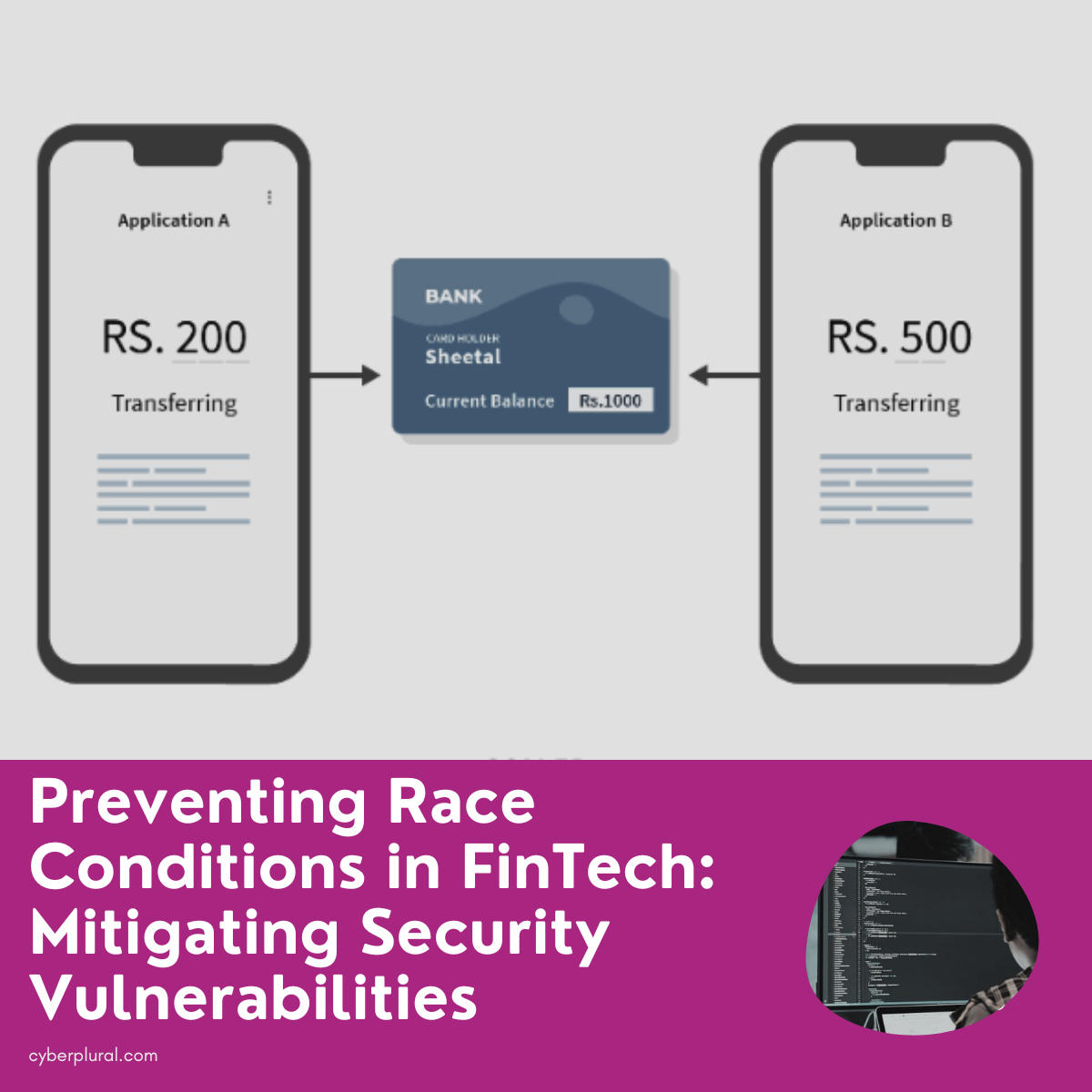Preventing Race Conditions in FinTech: Mitigating Security Vulnerabilities

Race conditions are a common security vulnerability that can affect financial technology (FinTech) systems. A race condition occurs when two or more processes access and manipulate the same data simultaneously, leading to unpredictable and potentially harmful results. In a FinTech context, race conditions can result in financial losses, data breaches, and reputational damage. In this blog post, we will explore what race conditions are, how they can impact FinTech systems, and what security measures can be put in place to mitigate them.
What is a Race Condition?
A race condition occurs when two or more processes access and manipulate the same data simultaneously, leading to unpredictable results. This can occur when multiple processes are trying to access a shared resource, such as a database or file system. If these processes are not properly synchronized, they may overwrite each other’s changes or perform actions out of order, leading to incorrect or inconsistent results.
How Race Conditions Impact FinTech Systems
In FinTech systems, race conditions can have serious consequences. For example, if two transactions are processed simultaneously, one transaction may overwrite the other, leading to financial losses for the affected parties. Additionally, race conditions can lead to data breaches and other security vulnerabilities. For example, if two processes are accessing a user’s account information simultaneously, one process may gain unauthorized access to the data and use it for malicious purposes.
Security Measures to Mitigate Race Conditions in FinTech
To mitigate race conditions in FinTech systems, it is important to implement proper synchronization and locking mechanisms. Here are some best practices for preventing race conditions in FinTech:
- Implement transactional database operations: Use transactional database operations to ensure that multiple operations on a database are treated as a single unit of work. This can help prevent race conditions by ensuring that transactions are processed in a consistent order.
- Use locking mechanisms: Use locking mechanisms to prevent multiple processes from accessing the same data simultaneously. This can include row-level locking or table-level locking, depending on the specific use case.
- Implement message queues: Use message queues to manage the flow of data between processes. This can help prevent race conditions by ensuring that processes are synchronized and that data is processed in a consistent order.
- Implement rate limiting: Implement rate limiting to prevent multiple requests from being processed simultaneously. This can help prevent race conditions by ensuring that requests are processed in a consistent order.
Conclusion
Race conditions are a common security vulnerability that can affect FinTech systems. By implementing proper synchronization and locking mechanisms, FinTech organizations can mitigate the risk of race conditions and ensure the security and integrity of their systems. By following these best practices, FinTech organizations can protect their customers’ financial information and maintain their reputation as trustworthy and secure providers of financial services.

Leave a Reply